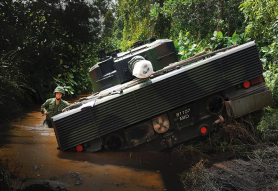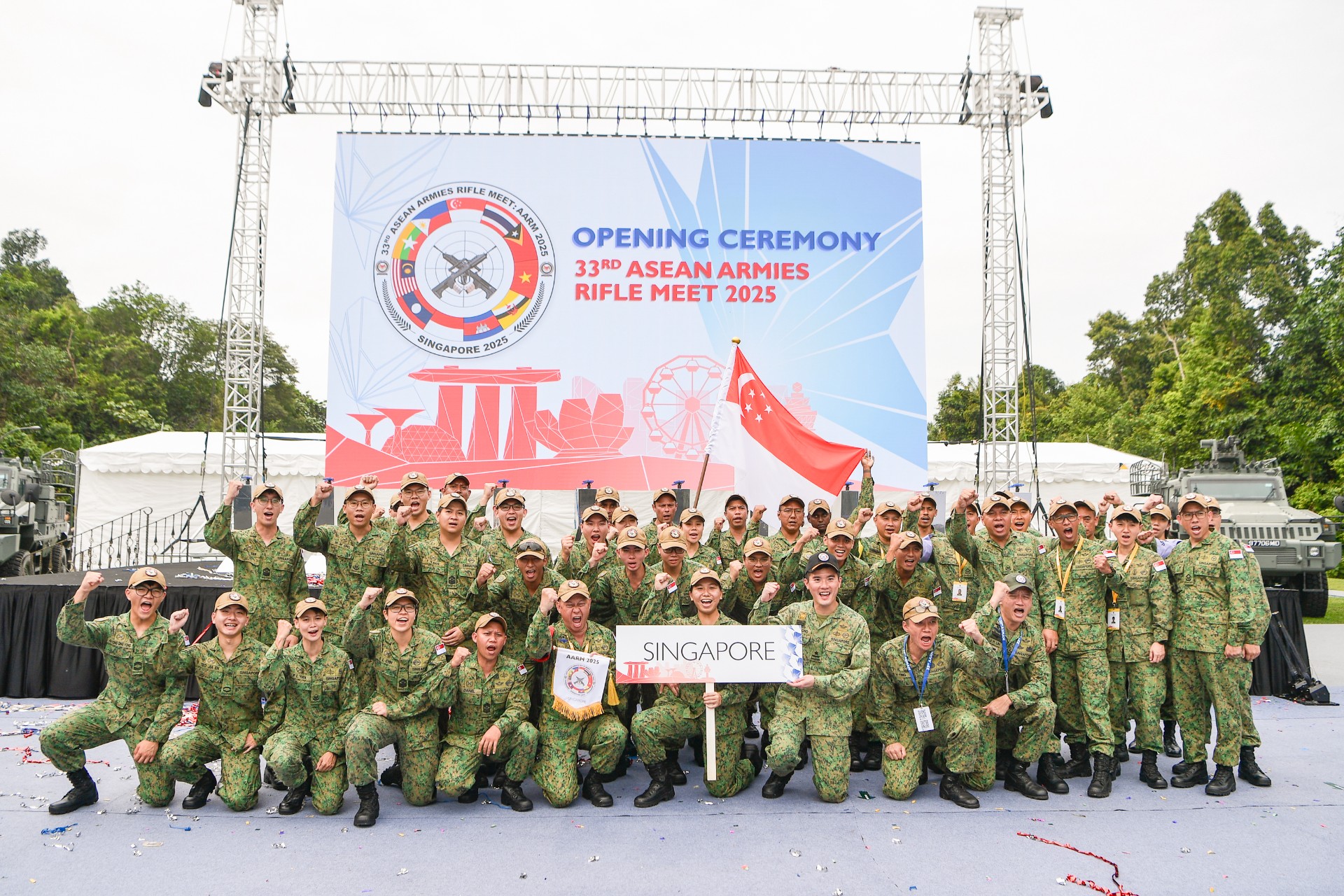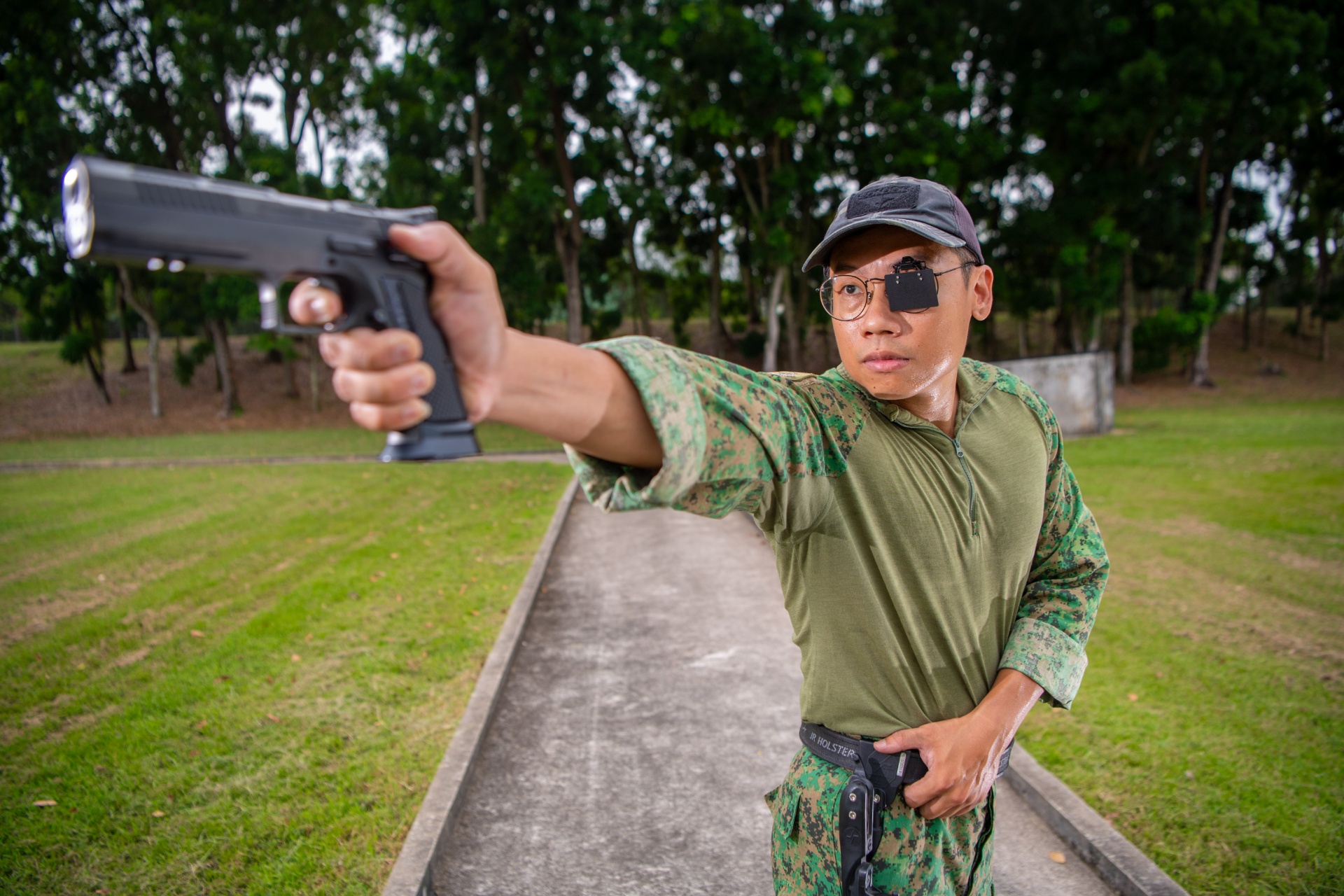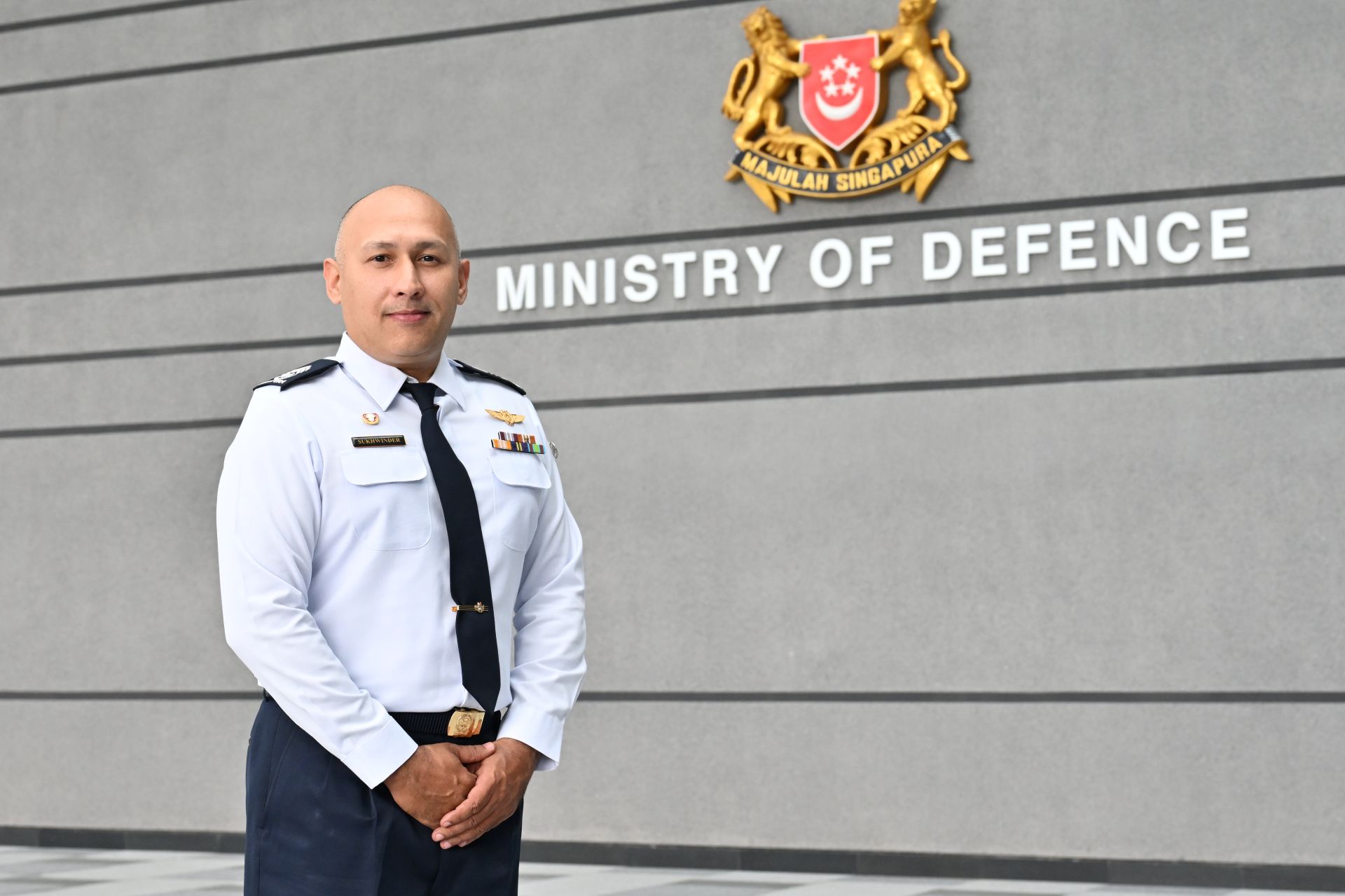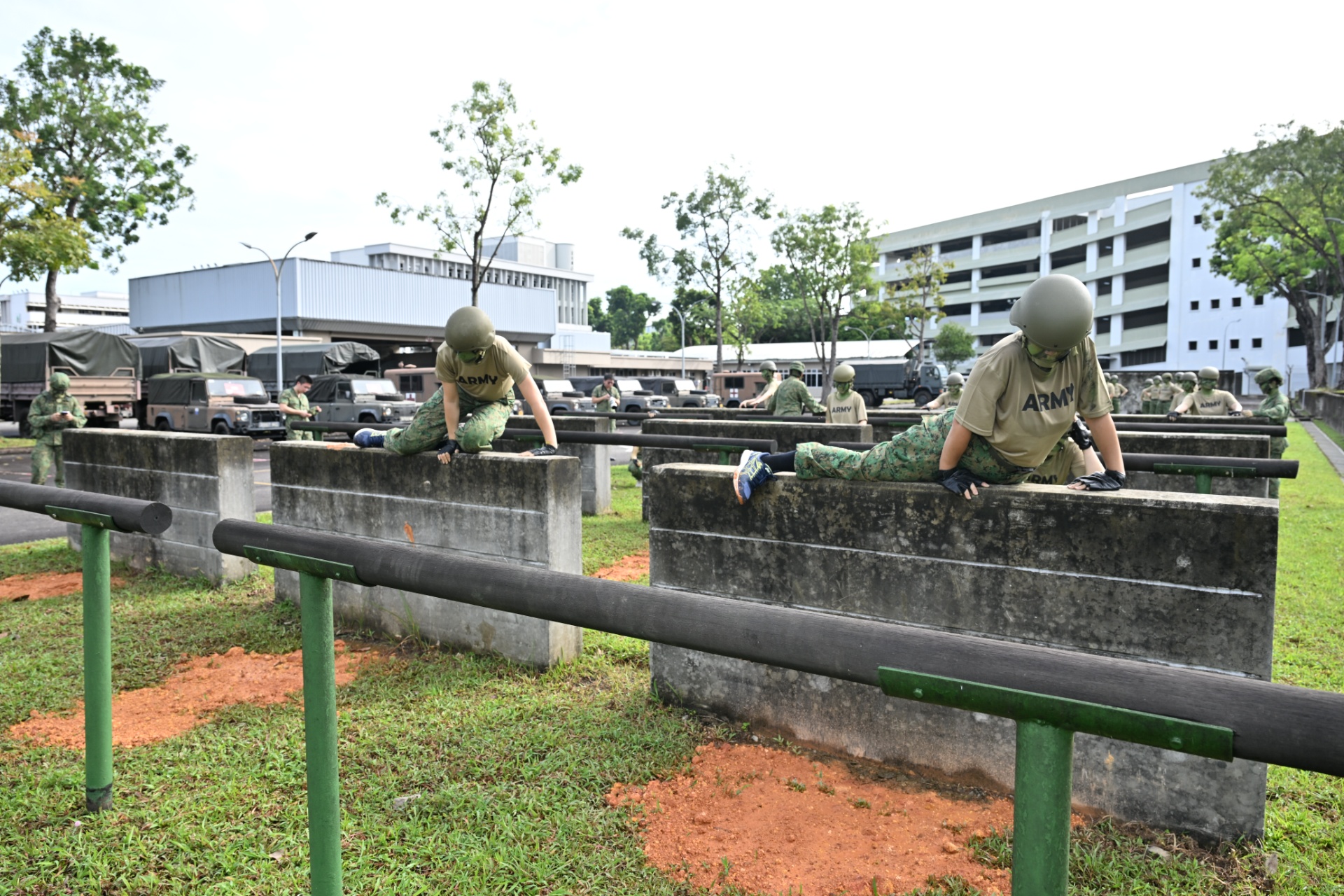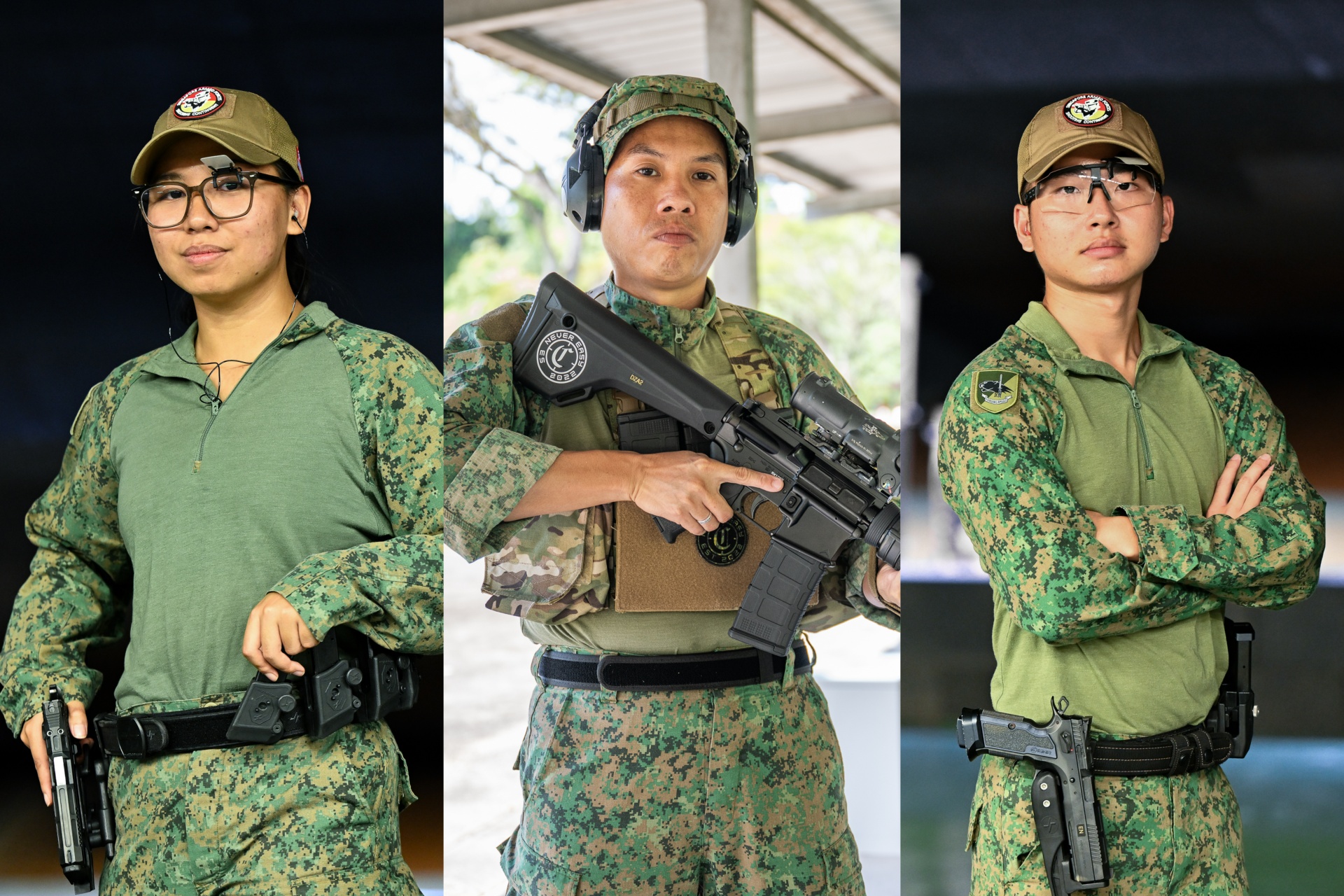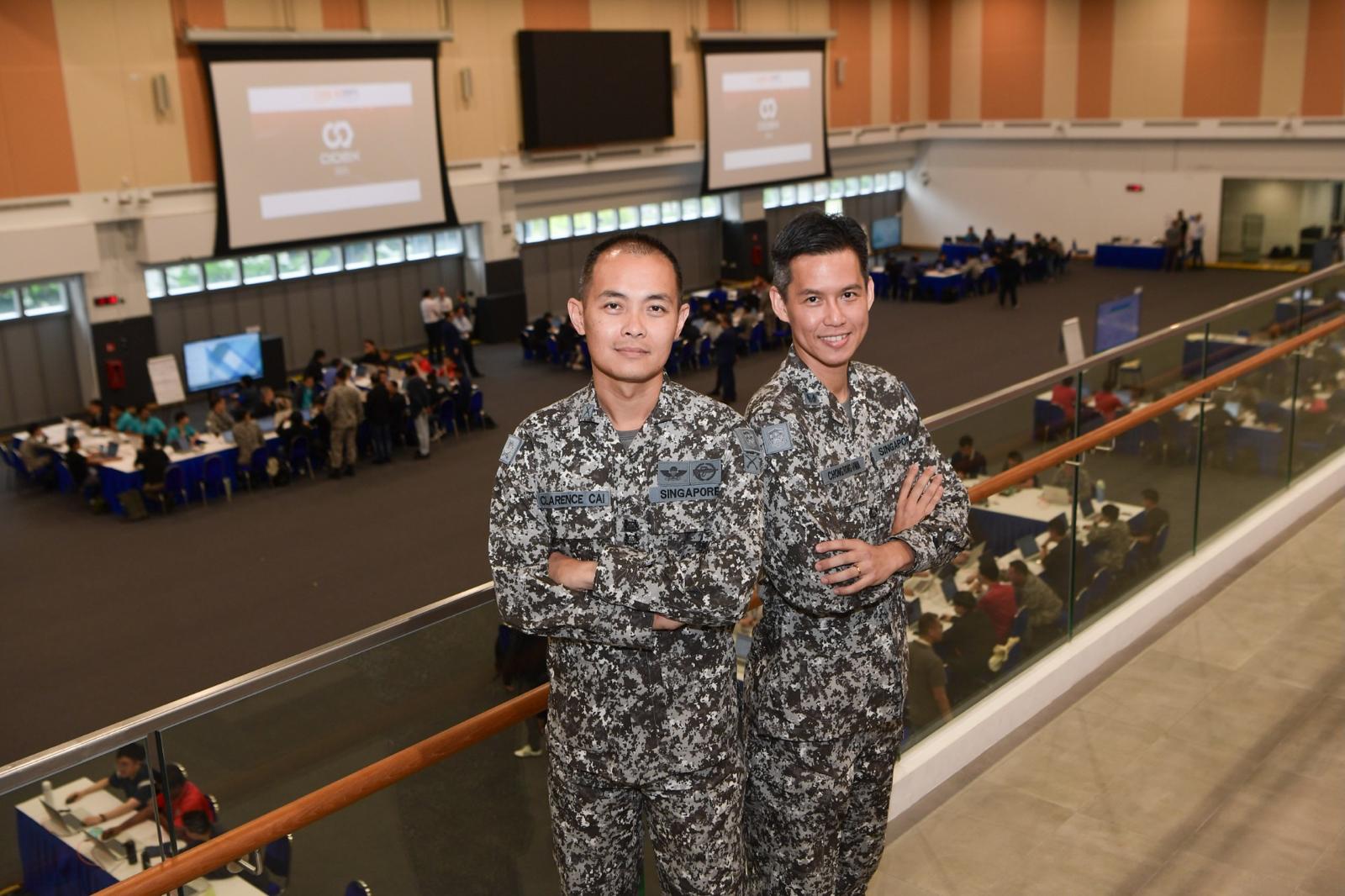SOMEBODY'S GOTTA DO IT: KINGS OF RECOVERY
PHOTO // Simon Koh
When a Leopard tank gets stuck, pulling it out is no easy task. Find out how the soldiers of the 1st Army Maintenance Base (1 AMB) overcome this challenge in the third and final feature of this series.
Anyone who has seen the Leopard 2SG Main Battle Tank (MBT) sprint over rugged terrain would know that the vehicle was built for the harshest of conditions. Running on heavy-duty tracks and powered by a massive 12-cylinder diesel engine pumping out 1,500 horses (about 10 times more power than your average car on the road) at full tilt, it takes some of the roughest terrain in its stride and then some.
When it does get stuck, it takes a well-trained three-man crew - comprising a commander, an operator and a mechanic - and another monster - the Armoured Recovery Vehicle (ARV) - to get it back on its feet. Loose soil, sticky mud and murky waters are all par for the course when the ARV team is out recovering a mired Leopard 2SG MBT.
Embracing the mud
To free the immobilised tank, the crew usually has to step into whatever the vehicle is stuck in. This involves getting waist-deep into a pool of gunk to find out what exactly the tank is in. How sticky the mud is and how much contact there is between the ground and the casualty tank all come into play when an ARV crew decides on the best possible way of recovery.
"Basically, we have a few ways to set up the ARV in order to overcome the forces acting on the casualty tank," explained 3rd Sergeant (3SG) Delwyn Lim, Section Commander, 48th Forward Maintenance Platoon (48 FMP), 1 AMB.
For example, when a tank's tracks are completely off the ground and the tank is actually sitting on its belly, it takes more to extract the stuck tank. That's when the 105-tonne maximum pulling force of the ARV comes in handy. "The ARV can be set up to exert more force by using a system of pulleys," said Military Expert (ME) 1 Wong Chen Wai, Assistant Master Tech Trainer, 48 FMP.
Added 3SG Lim: "Those pulleys are not light and we often can't see the connectors on the mired tank because it's deep in the mud. We have to feel around and rely on our knowledge to rig up the recovery equipment properly."
No easy formula
The ARV crew's work seems deceptively simple: get to the mired tank, hook up and pull it out. However, that could not be further from the truth.
"Apart from safety for both sets of crew (that of the ARV and the immobilised tank), we have to assess how best to rescue the stuck tank without causing further damage to it," said 3SG Lim on the issues he keeps in mind in every recovery operation.
For example, if the tank is sitting on a slope, any movement might cause it to slide away. As such, the possibility of further damage has to be considered when the crew hatches their plan. Any miscalculation could spell disaster; hence every ARV crew is trained to assess situations thoroughly and is expected to think on their feet.
Well-rounded experts
Rescuing stuck tanks and other vehicles is just one part of the job. The crew is also trained to carry out power-pack transplants in the field and general repair of the Leopard 2SG MBTs.
Performing power-pack transplants in the workshop is already a tedious affair, and each ARV crew has to learn how to do this in the field with just the ARV's crane and their knowledge. For this reason, part of the ARV course involves training each soldier to operate the crane.
"One of the things we had to do was learn to place a pen into a bottle with the crane. At first, I totally missed the mark each time but as the days went by, I found it easier," said Lance Corporal Low Wen Jie, an ARV operator from 48 FMP. "You just have to keep practising until you become good at it."
Part of the job
Said LCP Vicknesh s/o Rajkumar, a Full-time National Serviceman from the 13th Forward Maintenance Depot who is also trained to operate the ARV: "The job is rewarding because we go out to help tank crews and when you pull a 52-tonne thing out from the mud, and see the crew returning to their mission, you feel like you ve done something good."
He added: "You don't think about how dirty you are because someone needs your help when their tank is down. All you think about is what you need to do."
ARV trainer ME2 Teo Wee Leong summed it up by saying: "As technicians, getting muddy and dirty is normal. Just doing our job."
